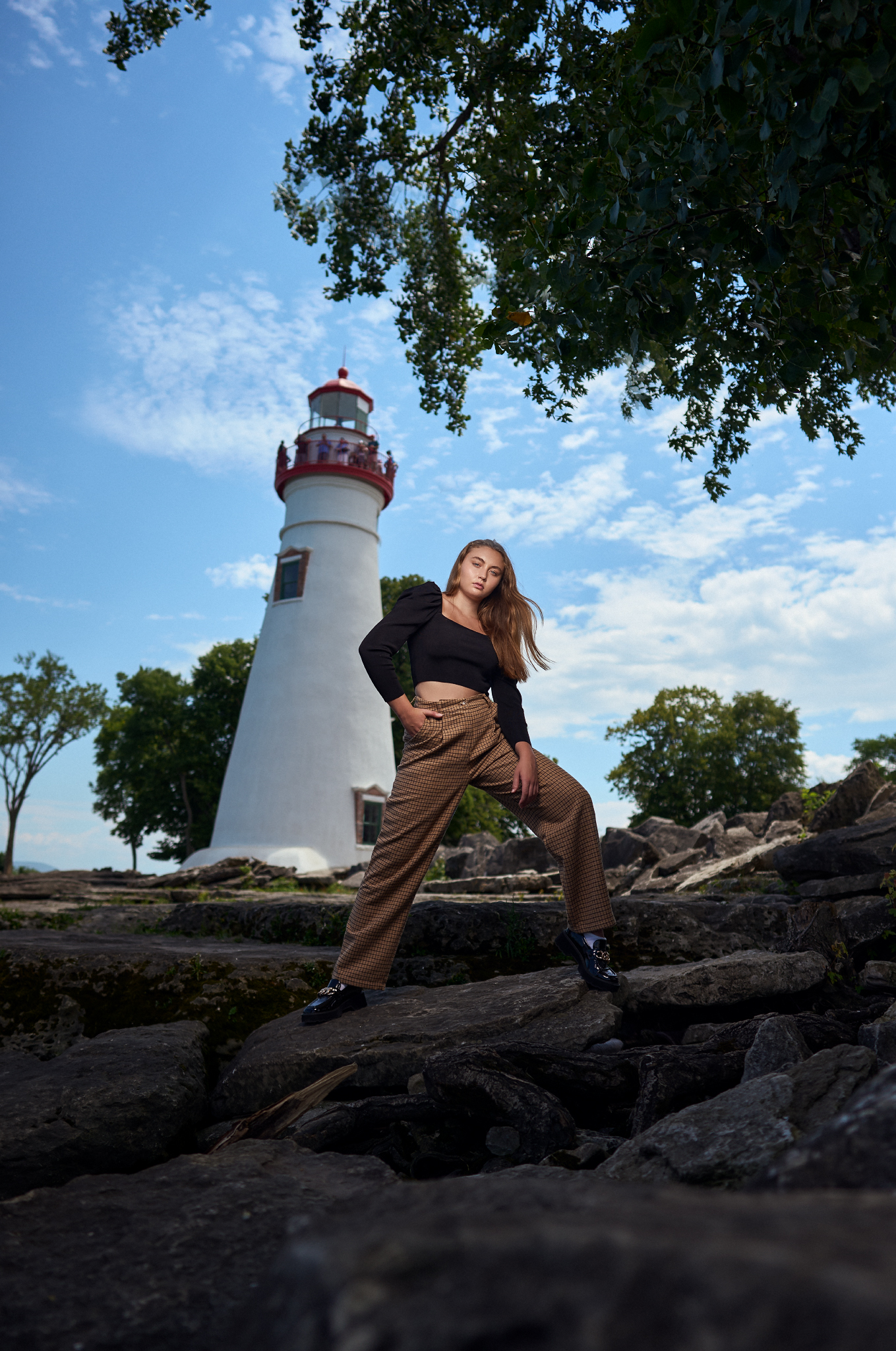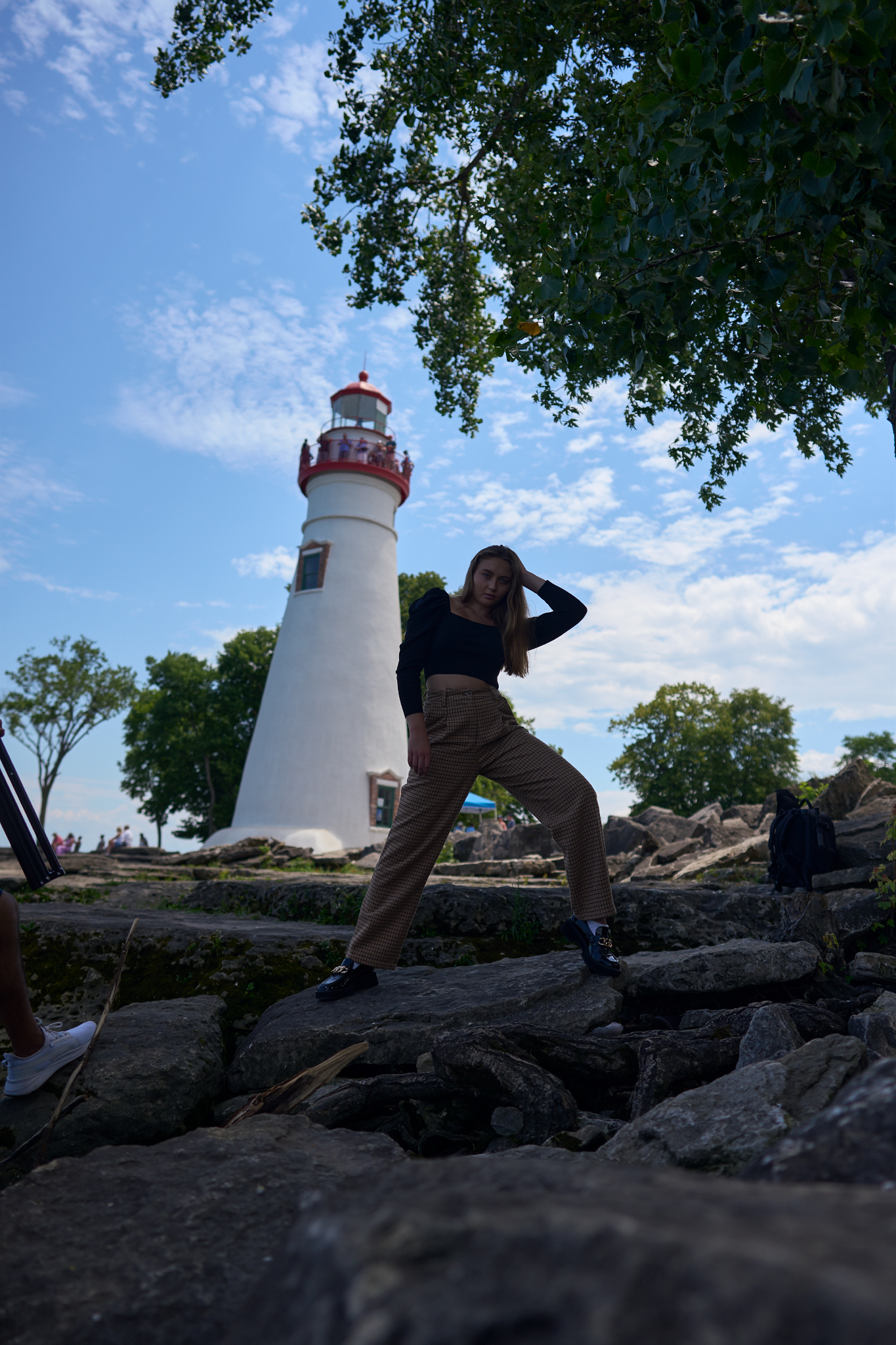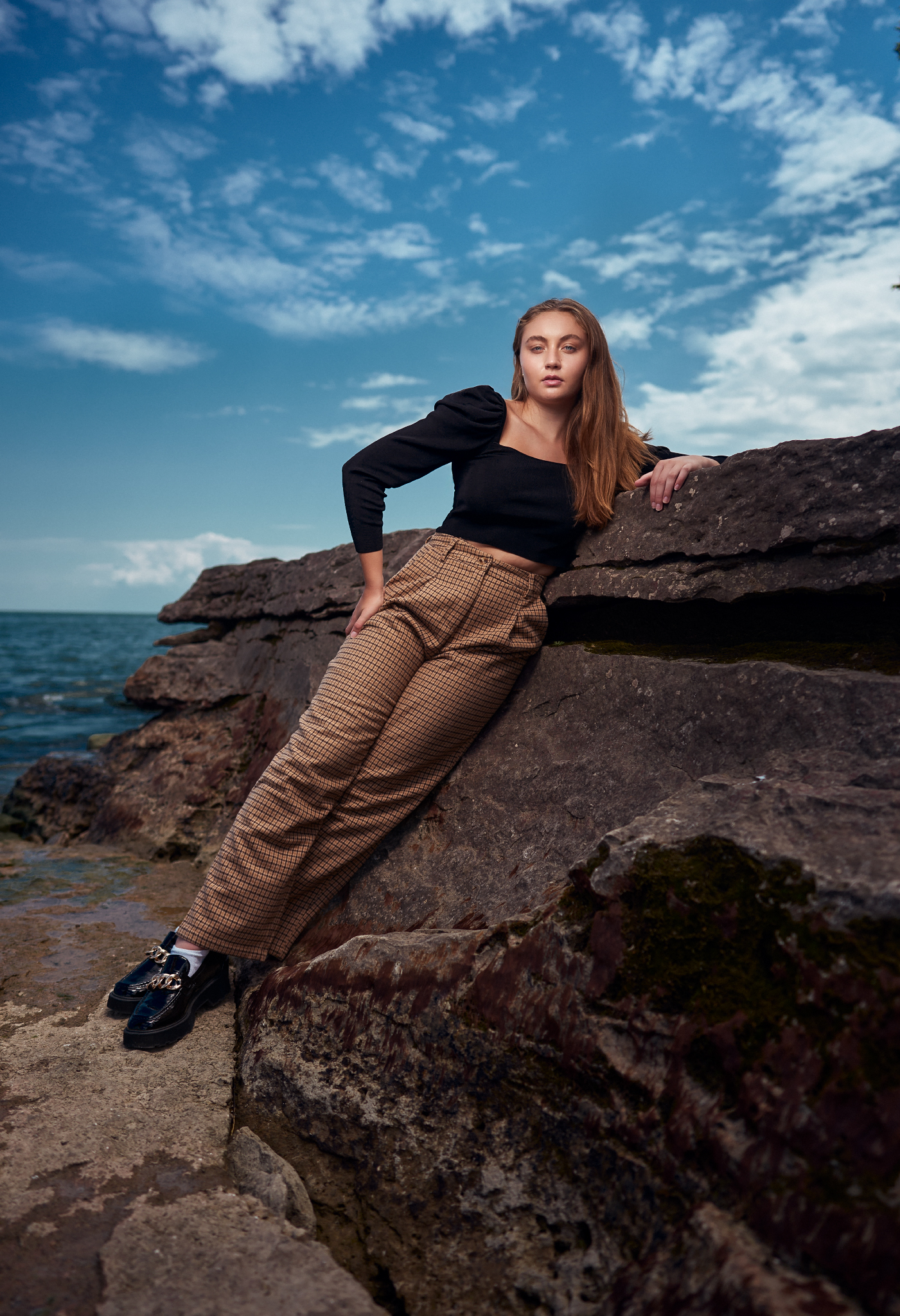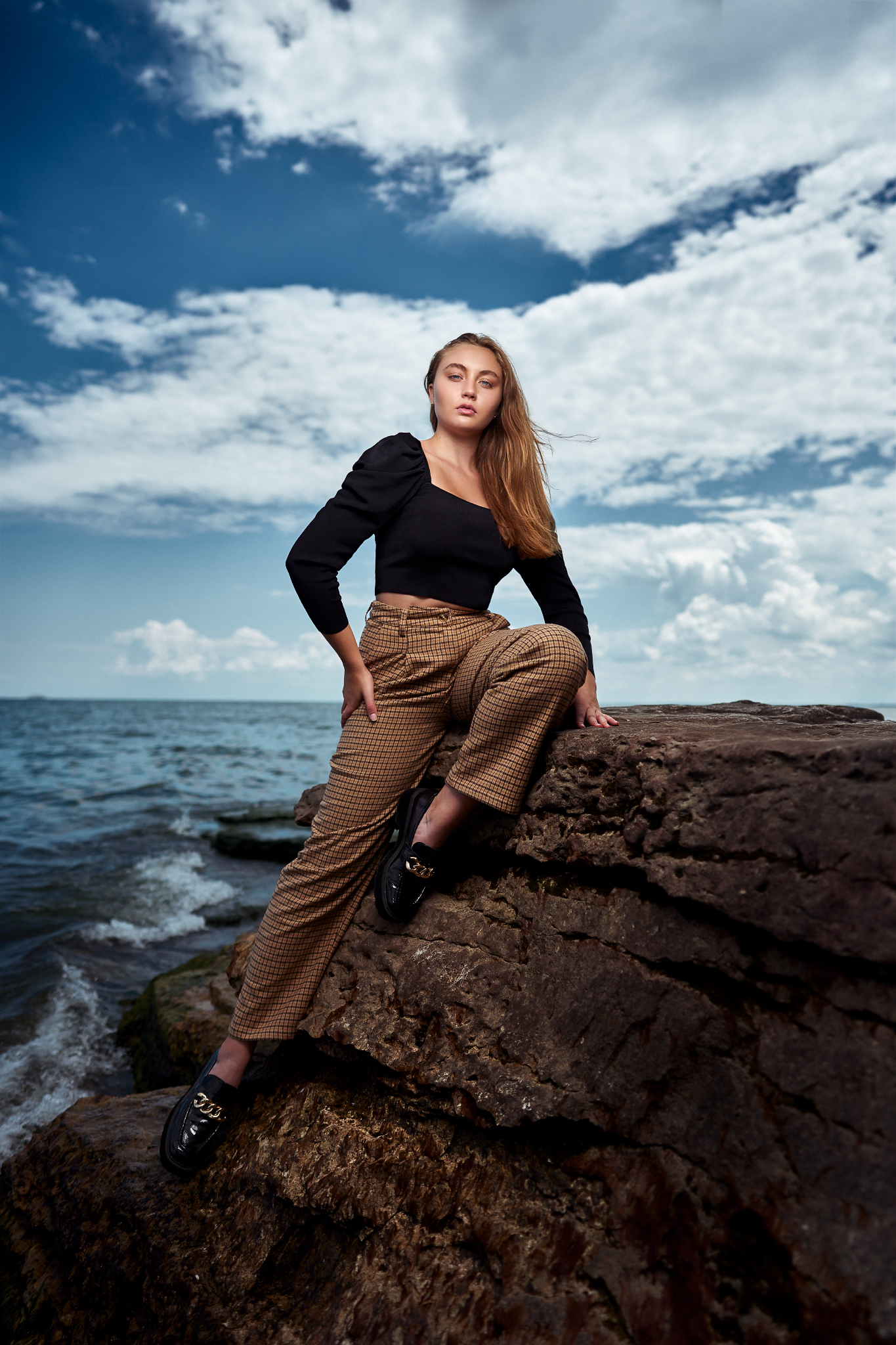Capture Stunning Wide-Angle Portraits On Location
Go behind the scenes with Westcott Top Pro Photographer Eli Infante as he shoots wide-angle portraits at Marblehead Lighthouse in Ohio. In this video, he covers the importance of using flash photography with high-speed sync and gives tips for using wide-angle lenses when working on location.
Understanding Wide-Angle Portraits
Wide-angle portraits are not only about capturing a subject. They’re also about capturing the environment. Using a wide-angle lens, such as a 24mm like Eli is using in this video, photographers can include more of the scene around them. However, this comes with some challenges, like lens distortion, maintaining the subject’s prominence in the frame, and dealing with complex lighting scenarios, all while working on location.
The Challenge of On-Location Photo Shoots
Shooting on location introduces variables that photographers must navigate. As highlighted in the video, Eli faces the challenge of incorporating the lighthouse into the frame while working in a crowded and compact area. The key to this is patience and finding the perfect angle. Eli waits until the perfect time, where the scene is clear of any distractions.
Portable Lighting Solutions
When working on location, especially in crowded areas, it’s important to have gear that is compact and portable, like the FJ200 Strobe with the 24-inch Deep Umbrella. The FJ200’s portability is a game-changer for on-location portrait photographers. It provides the flexibility to work in confined spaces yet powerful enough to handle the dynamic conditions of an outdoor environment. Coupled with the silver interior 24″ Deep Umbrella, with the added Diffusion Panel, it offers a strong and focused light that flatters the subject while preserving the scene’s ambient lighting.
Leveraging Flash Photography and High-Speed Sync
Being able to utilize a flash that is capable of High-speed sync (HSS) is a critical technique for photographers shooting on location, especially in bright conditions. HSS enables photographers to use a flash at shutter speeds faster than the camera’s native sync speed, thus avoiding overexposure of the background while still illuminating the subject properly. Using HSS allows photographers to easily balance ambient light with flash, ensuring the subject is well-lit without sacrificing the background’s natural beauty. Throughout the shoot, Eli uses the HSS feature on his FJ200 strobe to beautifully balance both the ambient light and the light from his strobe to create stunning portraits.
Light Position for Wide Angle Portraits
When working quickly, Eli’s go-to light position is butterfly lighting, due to its nice, even lighting. When working with his assistant, Marco, he directs him to place the light as close to the subject as possible without being in the frame. By keeping the light close to his subject, he maximizes the flashes output while still getting soft even lighting on his subject’s face.
Tips For When Your Light Is in the Frame
When shooting wide angle portraits, photographers will sometime find they cannot place their light in the ideal position. Since they are shooting wide angle, and showing more of the environment, the light and light stand will sometimes be in the shot. Eli shows his quick and easy solution to this. He simply takes two shots, one with the light in the frame, where the lighting looks good on his subject, and another with the light removed from the scene, his template shot. Later in post production, he will remove the light stand by using layered masks in Photoshop to combine the two images into the perfect shot. When doing this technique, communication with assistants is paramount. They not only need to place the light in the correct position, but also need to quickly move the light in and out to get the two shots.




The Importance of Composition in Wide-Angle Portraits
While shooting wide-angle portraits, keeping the subject within the center of the frame is crucial. As many photographers know, when working with wide angle lens, distortion is something you need to consider. Also, the wider the lens, the more distortion you need to deal with. To counter this, Eli strategically places his subject in the center of the frame to help minimize any distortion that might be affecting his subject.
Creative Strategies for Impactful Portraits
Eli showcases several creative strategies to enhance wide-angle portraits. From experimenting with the subject’s positioning—such as sitting on a platform for a different perspective—to adopting edgy poses for dynamic compositions, these techniques are designed to add visual interest and depth to the photographs, while also providing different looks to your shoot.
Capturing the perfect shot isn’t as difficult as you might think. With the right approach and mindset, photographers can navigate the complexities of on-location shoots, turning potential obstacles into opportunities for creativity and innovation.
Final Thoughts on Wide-Angle Portraits
Wide-angle portraits, with their unique blend of storytelling and technical complexity, offer an avenue for photographers looking to push their boundaries. By mastering the nuances of flash photography, high-speed sync, and on-location shooting, you can create captivating imagery that stands out. We hope this guide not only educates but also inspires you to explore the vast potential of wide-angle portrait photography. Remember, the journey of photography is one of constant learning and discovery.
Lighting Gear in Action

Quick-Mount S-Bracket2543

Quick-Mount S-Bracket2543





You must be logged in to post a comment.